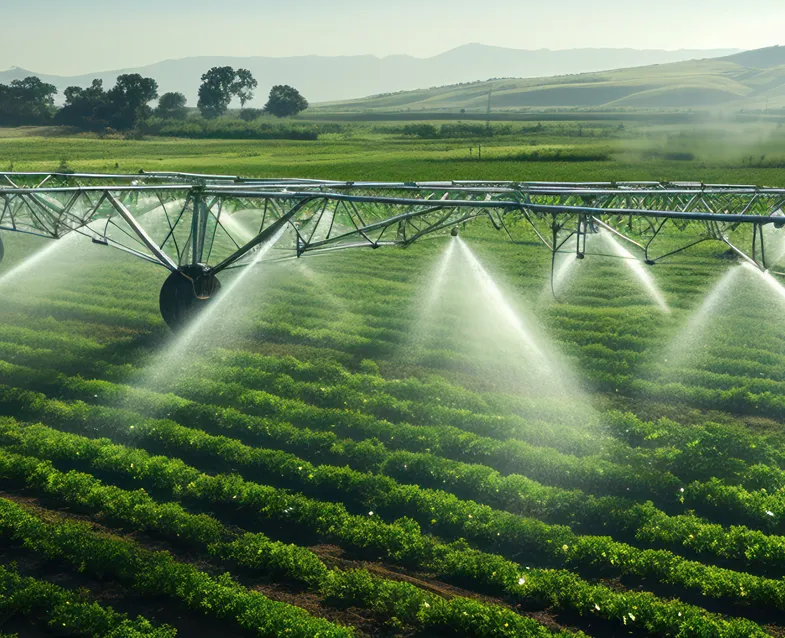
Water management is a critical aspect of farming, directly influencing crop health, yield, and sustainability. Selecting the appropriate irrigation system can make a significant difference in how efficiently water is used on your farm, ultimately affecting your overall productivity and environmental impact. This guide will help you navigate the various irrigation options available, enabling you to choose the system that best suits your farm’s specific needs.
Understanding Different Irrigation Systems
Irrigation systems come in various forms, each designed to meet specific agricultural needs. The most common systems include drip irrigation, sprinkler irrigation, surface irrigation, and subsurface irrigation.
Drip irrigation delivers water directly to the roots of plants through a network of tubes, emitters, and valves, making it highly efficient. This method reduces water loss due to evaporation and ensures that crops receive consistent moisture levels, which is particularly beneficial in water-scarce regions or for high-value crops.
Sprinkler irrigation mimics natural rainfall by spraying water over crops through a system of nozzles connected to pipes. It’s a versatile method suitable for a wide range of crops and field sizes. However, it may involve water loss due to evaporation or wind drift and typically requires a reliable water supply and moderate energy for operation.
Surface irrigation, also known as flood or furrow irrigation, involves distributing water across the surface of the field by gravity. It’s a simple and cost-effective method that requires minimal infrastructure, making
Subsurface irrigation involves delivering water directly to the root zone through buried pipes or drip lines. This system reduces evaporation and water loss, making it a highly efficient option, especially in areas with sandy soils or where water conservation is a priority. However, the initial installation can be expensive, and maintenance can be complex.
Key Considerations for Choosing an Irrigation System
When selecting the right irrigation system for your farm, several factors should be considered:
Water Availability is one of the most critical factors. In regions where water is scarce, a high-efficiency system like drip or subsurface irrigation may be the best choice to maximize the use of available water.
Crop Type also plays a significant role in determining the appropriate irrigation method. High-value crops, such as fruits and vegetables, benefit from precise water delivery systems like drip irrigation, which provide consistent moisture directly to the roots. In contrast, field crops like wheat and rice might do well with surface irrigation, where uniform water coverage over large areas is required.
Soil Type influences water absorption and retention. Sandy soils, which drain quickly, may require a system that provides frequent, small amounts of water, such as drip or sprinkler systems. In contrast, clay soils, which hold water well, might be better suited for surface irrigation methods.
Field Topography is another important consideration. Flat fields are ideal for surface irrigation, where gravity can evenly distribute water across the field. However, for fields with uneven terrain, drip or sprinkler systems may be more effective in delivering water evenly.
Budget and Costs must also be factored in. While systems like drip and subsurface irrigation may have higher initial costs, they often result in long-term savings through more efficient water use. Balancing the upfront investment with ongoing operational costs is crucial for making a financially sound decision.
Finally, consider the Labor and Maintenance requirements. Some systems, like drip irrigation, need regular maintenance to prevent clogging, while surface irrigation requires minimal upkeep but may be less efficient in water usage.
Making the Right Choice
Choosing the right irrigation system is a decision that impacts both the short-term and long-term success of your farm. By evaluating factors such as water availability, crop type, soil conditions, field topography, budget, and maintenance needs, you can select an irrigation system that aligns with your farm’s goals for efficiency, sustainability, and productivity.
Conclusion
Efficient water use in agriculture is vital for sustaining crop yields and protecting natural resources. While advanced irrigation systems can offer substantial benefits, the key is to choose the one that best matches your farm’s unique conditions and needs. Whether it’s the precision of drip irrigation, the versatility of sprinkler systems, or the simplicity of surface irrigation, making an informed choice will help ensure the long-term health and success of your farm. By following this guide, you’ll be well on your way to implementing an irrigation system that meets both your practical and environmental goals.

Comments are closed